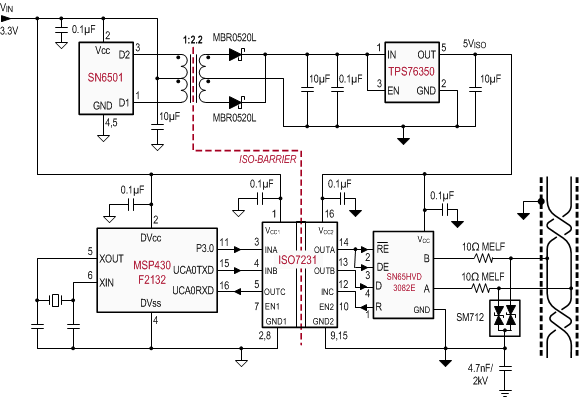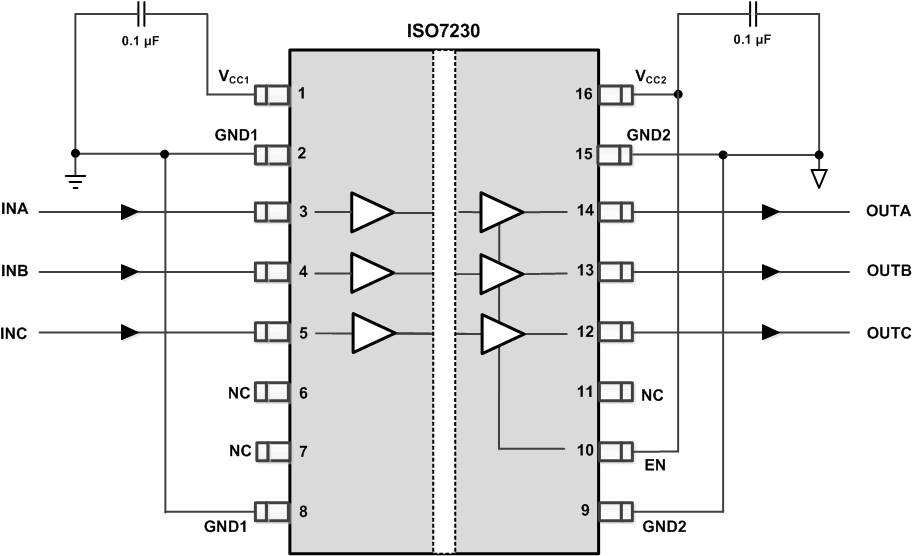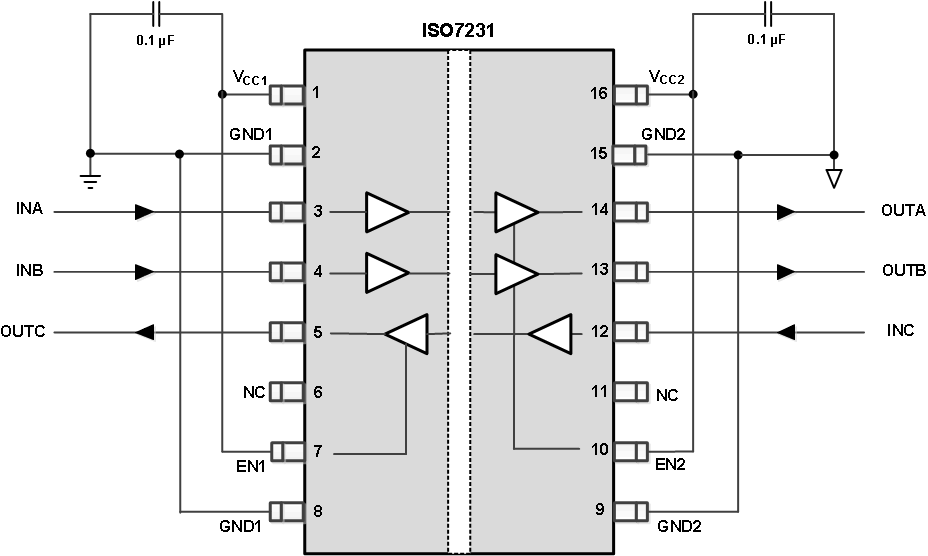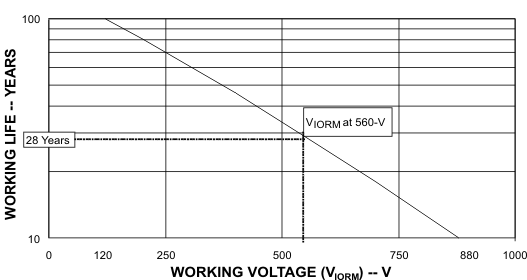SLLS867K September 2007 – October 2015 ISO7230C , ISO7230M , ISO7231C , ISO7231M
PRODUCTION DATA.
- 1 Features
- 2 Applications
- 3 Description
- 4 Revision History
- 5 Device Comparison Table
- 6 Pin Configuration and Functions
-
7 Specifications
- 7.1 Absolute Maximum Ratings
- 7.2 ESD Ratings
- 7.3 Recommended Operating Conditions
- 7.4 Thermal Information
- 7.5 Electrical Characteristics: VCC1 and VCC2 at 5-V
- 7.6 Electrical Characteristics: VCC1 at 5-V, VCC2 at 3.3-V
- 7.7 Electrical Characteristics: VCC1 at 3.3-V, VCC2 at 5-V
- 7.8 Electrical Characteristics: VCC1 and VCC2 at 3.3 V
- 7.9 Power Dissipation Characteristics
- 7.10 Switching Characteristics: VCC1 and VCC2 at 5-V
- 7.11 Switching Characteristics: VCC1 at 5-V, VCC2 at 3.3-V
- 7.12 Switching Characteristics: VCC1 at 3.3-V and VCC2 at 5-V
- 7.13 Switching Characteristics: VCC1 and VCC2 at 3.3-V
- 7.14 Typical Characteristics
- 8 Parameter Measurement Information
- 9 Detailed Description
- 10Application and Implementation
- 11Power Supply Recommendations
- 12Layout
- 13Device and Documentation Support
- 14Mechanical, Packaging, and Orderable Information
パッケージ・オプション
デバイスごとのパッケージ図は、PDF版データシートをご参照ください。
メカニカル・データ(パッケージ|ピン)
- DW|16
サーマルパッド・メカニカル・データ
発注情報
10 Application and Implementation
NOTE
Information in the following applications sections is not part of the TI component specification, and TI does not warrant its accuracy or completeness. TI’s customers are responsible for determining suitability of components for their purposes. Customers should validate and test their design implementation to confirm system functionality.
10.1 Application Information
ISO723x utilize single-ended TTL or CMOS-logic switching technologies. The supply voltage range is from 3.15 V to 5.5 V for both supplies, VCC1 and VCC2. When designing with digital isolators, it is important to keep in mind that due to the single-ended design structure, digital isolators do not conform to any specific interface standard and are only intended for isolating single-ended CMOS or TTL digital signal lines. The isolator is typically placed between the data controller (that is, μC or UART), and a data converter or a line transceiver, regardless of the interface type or standard.
10.2 Typical Application
ISO7231 combined with Texas Instruments' mixed signal micro-controller, RS-485 transceiver, transformer driver, and voltage regulator can create an isolated RS-485 system as shown in Figure 16.
 Figure 16. Isolated RS-485 Application Circuit
Figure 16. Isolated RS-485 Application Circuit
10.2.1 Design Requirements
Unlike optocouplers, which need external components to improve performance, provide bias, or limit current, ISO723x only needs two external bypass capacitors to operate.
10.2.2 Detailed Design Procedure
 Figure 17. Typical ISO7230 Circuit Hook-up
Figure 17. Typical ISO7230 Circuit Hook-up
 Figure 18. Typical ISO7231 Circuit Hook-up
Figure 18. Typical ISO7231 Circuit Hook-up
10.2.3 Application Curve
 Figure 19. Time Dependant Dielectric Breakdown Testing Results
Figure 19. Time Dependant Dielectric Breakdown Testing Results